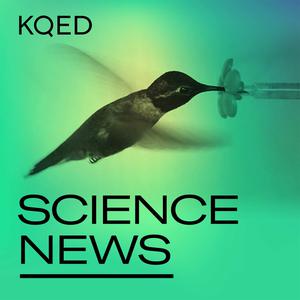
KQED Science News
KQED
KQED Public Media for Northern CA
- 3 minutes 42 secondsIf You’re Offered the Johnson & Johnson Vaccine, Take It, Experts Say. Here’s Why
This week, news of a rare blood clot in a patient at UCSF, after he received the Johnson & Johnson coronavirus vaccine, brought this very small risk close to home.
The chance of developing these blood clots is tiny — only 2 in 1 million. And UCSF reported Monday that the patient is doing well and expected to go home in a few days. Still, knowing there is a risk at all is upsetting and confusing.
Health experts agree Johnson & Johnson is still a great vaccine. Professor Susana Ramírez, a UC Merced expert in communication, culture and public health, recently shared some guidelines with KQED’s Raquel Maria Dillon about how to evaluate risks around these vaccines.
This interview has been edited for length and clarity.
There have been 16 of these rare blood clot cases out of about 8 million Johnson & Johnson doses given out in the U.S. Can you put that overall risk of this vaccine in context for us?
Susana Ramírez: The extraordinarily rare events that we are seeing, with these blood clotting disorders are tragic and sad, but they’re extremely rare. But the potential to be infected with the coronavirus is much higher than the potential to get one of these severe side effects.
As humans, we really want to avoid bad outcomes. And so it’s really easy for us to focus on the negative outcomes that we might be hearing about, even when those outcomes are so very rare. And the risks from the coronavirus are not so obvious. Some people get very sick and they are hospitalized, and some people die, but other people may not get a very significant disease. I think what we need to focus on is the relative risk here is much lower for side effects than of getting the actual coronavirus.
We’ve heard from our audience that they have concerns that the J&J shot is for homeless people or people who don’t have time to come back for a second shot. They’re basically worried it’s a lower quality option. How do you address that?
Ramírez: I think the very most important fact to remember is that all three of the vaccines that are available to people in the United States have incredibly high efficacy rates. The very best vaccine is the one that you can get in your arm as soon as possible.
All three of these vaccines have prevented serious hospitalization and death from this disease. And that’s the worst case, right? That’s the worst-case outcome. And all three of these vaccines are effective at preventing those.
But the problem with trying to compare [efficacy rates] is that these three vaccines were developed at different times, and they were developed and tested with essentially different groups of people. The Moderna and Pfizer vaccines were tested really at the early end of the pandemic over a year ago.
The J&J clinical trials finished very recently. And by that time, we’d been engaging in behavioral measures like wearing masks and social distancing. So those things had been in place for months when the J&J vaccine was tested. So we were a different population, and the disease itself was different by this point. We had more variants that were circulating. And so it was really tested under very different conditions. So there’s not an apples to apples comparison that you can do, although it’s tempting.
In some ways, even though we see a lower effectiveness, it’s really among a disease that had evolved and changed and adapted to our conditions. And so the fact that the vaccine is still effective in that context, I think is a real strength and plus in the J&J column. I don’t think by any stretch of the imagination that we should think about it as a lesser kind of vaccine.
I think that there is definitely a kernel of truth to the idea that folks are talking about the two-dose vaccines, the Pfizer and Moderna, being for more privileged people. You have to have certain privileges like a flexible job, transportation to the vaccination site twice, a stable residence and a phone number to make those follow-up appointments, and then the ability to take some time off if you’re not feeling well after the vaccine. But that doesn’t make any of the vaccines better from a disease prevention perspective.
Are you concerned that the appeal of the J&J shot — convenience — might not be enough to convince people to get it at this point? And what would that mean for getting to herd immunity, which is the broader societal goal?
Ramírez: You’re absolutely right. The number one goal is we want everybody to get a vaccine as soon as possible. We need to think about really messaging on that convenience. I think there are people like me who are terrified of needles. We would prefer just having to go one time. And that convenience — it’s not just about the needle. You have to take time off to get the vaccine. We may have localized side effects, which is not a big deal. But if you’re feeling kind of yucky or you have a headache, you don’t really want to go back to work the next day. And so that would be twice that you have to do that for the other two vaccines.
So the convenience of a one-shot vaccine is really something that we need to be talking up and selling because it’s a big deal. It’s a positive condition of this particular vaccine.
In my opinion, I don’t see a clear clinical reason to prefer one vaccine over another vaccine. So it’s really about the convenience.
I think people want to make rational decisions, especially when it comes to their health, but there are a lot of numbers being thrown around. You’ve got Pfizer and Moderna with efficacy rates in the 90s and Johnson & Johnson’s lower. So why is this so confusing?
Ramírez: I think the key number that we should be looking at as individuals is which of these vaccines is going to prevent me from getting this disease? And then which one of those is going to prevent such a severe case that I’m hospitalized or die from it? All of these have been tested in slightly different ways. And they’ve considered efficacy and measured it in different ways, like having some symptoms, any symptoms, having a positive test, or being hospitalized.
The takeaway is all three of these vaccines have prevented serious hospitalization and death from this disease. And that’s the worst case, right? That’s the worst-case outcome.
The numbers are really confusing. Even highly educated people have a really hard time making sense of risk because it’s not just a number, it’s a value and a set of values. We’re talking about our own health and the health of our loved ones.
So, again, it’s hard to compare, but [the three vaccines are] all incredibly good. The Moderna and the Pfizer vaccines were tested early on in the pandemic and they had different clinical outcomes. And now that they’ve been out in the real world, the other comparisons of efficacy are hard to make.
It’s hard to give people what they want, which is a really concrete answer to the question, How risky is this vaccine? I think the best answer that we can give is the risk of the vaccines is much, much, much lower than the risk of serious complications from the coronavirus, should you not be vaccinated.
This whole thing — the pandemic and the vaccines — is kind of a science experiment taking place on a world stage. What can people learn about science from this?
Ramírez: The fact that we have three vaccines in the U.S. and seven in the world that are already authorized for preventing a disease that no one knew about 18 months ago — that is amazing! And millions of people have already been vaccinated. I think it’s really important that we appreciate the incredible scientific achievement and the logistical feats that were involved in getting to this point.
When we stop to appreciate the fact that we have this global health crisis and we already have, and have had for months, the ability to control it — I think that should inspire confidence in science. And I also think that the temporary pause that occurred with the distribution of the J&J vaccine should also be applauded and celebrated as a way of increasing our confidence in science, because that pause shows that the real-world tracking and monitoring of the vaccines is is working.
29 April 2021, 5:48 pm - 7 minutes 11 seconds‘Worst. Editorial. Guidance. Ever.’ KQED Science Reporters Reflect on the Pandemic’s Early Days
It was a year ago that we suddenly all found ourselves working from home and obsessively washing our hands as the novel coronavirus started to spread in the U.S. and the Bay Area. A lot has changed since then: how we live, work, parent, plan and communicate. The coronavirus is hardly “novel” anymore. It has altered all of our lives.
KQED science reporters Lesley McClurg and Peter Arcuni, along with science editor Jon Brooks, spoke with Morning Edition host Brian Watt about what it was like to cover an unprecedented global pandemic over the past year.
The following has been edited for length and clarity.
You have been covering COVID-19 since before it was even called that. Can you take us back to those early days before we knew much about the virus?
Peter Arcuni: I remember coming into work last January expecting to do a story about fish ears. But my editor pulled me aside and said, ‘Hey, we need you to roll on a CDC teleconference about an outbreak of this new virus in China.’ And that’s when I learned about it for the first time. At that point, we didn’t even know what to call it. It didn’t have an official name, and what was a coronavirus anyway? As reporters, I think we were all just scrambling to figure out how serious it was.
Lesley McClurg: I think it was the exact same morning that I heard my first news clip about some virus circulating in China. I went back and listened and 17 people had died by that point. I was assigned to go to the San Francisco International Airport and just meet people coming in from a place called Wuhan and asked them, “What is it like in China?” So I raced to the airport. I had no idea even how to say the word Wuhan. I remember being really embarrassed about that. So I’m waiting for people coming in from customs and some are wearing masks and I start talking to them. I remember one woman, she was actually carrying her mask, and she was obviously not very worried about the new “coronavirus.”
Most people were pretty excited to come to San Francisco. It was Lunar New Year. That was the last direct flight to come in from Wuhan.
Jon Brooks: What I remember clearly is talking to the head of our online engagement team in January after the first U.S. cases were reported. She was concerned about this coronavirus thing. I had seen things in the news and we hadn’t really been covering it. And I remember telling her, “Yeah, don’t worry about it.” Worst. Editorial. Guidance. Ever.
Even after that, we did have a lot of editorial discussion over how much attention to give this. I remember talking to our NPR colleagues about not wanting to overplay this because we didn’t quite know what was happening. We did not want to panic anyone unnecessarily.
What is a story you remember doing that really sticks out in your memory?
LM: The virus hit home for me in April. I was interviewing this young guy named Colin Finnerty, a 21-year-old who works at a ski resort; he’s a lift operator there. The virus just took him out. This kid spent 10 days in the hospital. He almost didn’t make it. And that’s when I remember thinking, okay, this thing is not the flu.
PA: In the beginning the virus really was this scary unknown for people. So as reporters, we wanted to start putting a face to it. The first person I got to know who had it was a cruise ship passenger named Carl Goldman who wound up in Nebraska in a biocontainment lockdown facility for a month. Nowadays, he would probably just spend two weeks at home isolating. But what struck me was Carl’s super positive attitude. I remember him talking about doing his 10,000 steps in this tiny room in Nebraska.
I spoke to Carl a few weeks ago, and unfortunately he has some long hauler symptoms. He’s actually been in a wheelchair due to a nerve condition that he and his doctors think could have been exacerbated by COVID-19. But Carl being Carl, he’s kept positive. He even wants to book another cruise.
JB: I edited one of Lesley’s stories about doctors and nurses who were absolutely exhausted and feeling “betrayed” by people who weren’t following the guidelines. These health care workers were breaking down, witnessing so much death and pain. And they knew it didn’t have to be this way. They knew if people had just followed the guidelines, they wouldn’t be there in the hospital.
The other thing I remember is, I was live blogging everything. And then when the news came down that Major League Baseball was shutting down — that of all things hit me — because they played entire seasons during World War II. They did not stop. If they were shutting down Major League Baseball, exactly what were we dealing with here?
Things really were moving fast. You could go to the kitchen to get a glass of water and the whole story changed when you got back to your computer. So did covering the coronavirus change how you report your stories?
LM: As a science reporter, you really want science to be way down the line in terms of our understanding of something. It has to be vetted by journals and editors and peers. And you don’t put it on the air until we really know that it’s solid, factual science.
At this point in the coronavirus, we didn’t know anything. And so we’re putting stuff on the air that’s a preprint, stuff that has never been vetted by peer review. You know, can you get the coronavirus from touching a surface? Is it airborne? We didn’t know whether those answers were concrete, and we had to be vetting them on the air.
I think my takeaway is that, as science reporters, we need to do a lot more educating the public about the scientific process so they understand that’s how science works. Because I think they were really confused that we had information that changed over time, and yet that really is science.
JB: It was not just “news you can use,” it was “news you must use.” You know: Your school won’t be open tomorrow; in fact, don’t even leave your house. What started as a science story, became a public health story, became an everything story.
The other thing was this was a very hard story to report and keep track of because the health officials sort of kept moving the goal post of what was important to them. Early on they were tracking these metrics that they called “indicators,” including contact tracing ability and protective equipment supply and other stuff. We tried to stay abreast of all that. It was a lot of work. But pretty soon they just ditched the whole thing. They scrapped it and started keeping track of other things that they felt were important. And, you know, I think they were kind of making it up as they went along and we had to go along for the ride.
As the pandemic continued, was there a sense of monotony ever, even though things seem to be changing a lot, did you start feeling like you were kind of saying the same stuff?
PA: Absolutely. As much as things were changing, there were other things that were staying the same: Stay 6 feet apart; do your activities outside; wash your hands; wear your mask. I started to feel like there were only so many times I could write that story before the audience would tune out or burnout or get fatigued. For us science reporters, I think one of the big things was sitting down and talking about how we can tell these stories in new, creative ways. So we did FAQs. We made a quiz for people to test how well they were doing in their stay at home bubble. I remember doing a PSA early on with my daughter to show people how to wash their hands and why it works.
The challenge, and really the hope, was to help the audience, without totally freaking them out or losing them.
If another pandemic came around, what is your take away from this one?
LM: Well, I certainly wouldn’t run to the airport the next time a virus is circulating. Hopefully we learned some of the basics. I also think I would focus more on the positive. I think journalists are kind of inherently skeptical, kind of picky people. I think we really focused on a lot of the concerns: Do masks work 100 percent? Is this vaccine 100 percent effective? And yet masks, we have learned, work really well, even if they’re not 100 percent effective. And this vaccine is almost 100 percent effective, and I don’t think we really stressed that enough.
PA: And in terms of vaccines, you know, how fast we got them. A year ago, doctors were telling us it could be two years, maybe a year. We got three vaccines in less than a year, which is just crazy when you think about the decades it can take to develop other vaccines. We still don’t have a vaccine for HIV. So even with all the uncertainty and the snafus with testing and the response on the federal level, there were some real bright spots for science.
JB: I will certainly remember how rapidly the rug can be pulled out from underneath the entire world. Just like that, things were shut down. But I will also remember the resilience of us, the human race. We’re still here. Take that, coronavirus. We’re going to beat you.
1 April 2021, 1:57 am - 4 minutes 41 secondsKelp, Sea Otters and Urchins. Who’s Eating Who in Monterey Bay
Marine scientists have observed a massive decline of California’s underwater kelp forests in recent years. Studies have linked the die-off to a host of factors including an ocean heat wave, a deadly sea star virus, and an influx of voracious kelp-eating sea urchins.
Kelp’s long flat leaves and bulbous stems provide habitat for marine mammals, fish and invertebrates in tidal regions along California’s coast. In many regions where kelp once flourished, the ocean floor is now carpeted with spiny purple sea urchins and there’s no kelp to be found. Scientists call these zones the urchin barrens.
A new study out of UC Santa Cruz reveals more about the disappearance of California’s kelp forests, finding the leafy green seaweed is faring better in places where sea otters, a natural urchin predator, are thriving.
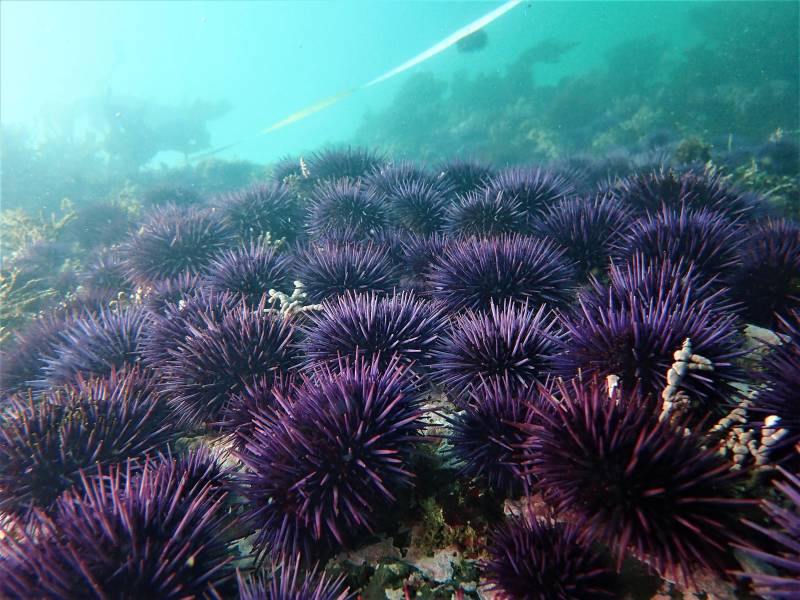 Most of the kelp forest ecosystem in Northern California has been replaced by urchin barrens dominated by purple sea urchins. (Katie Sowul/CDFW)
Most of the kelp forest ecosystem in Northern California has been replaced by urchin barrens dominated by purple sea urchins. (Katie Sowul/CDFW)
Several studies have documented the collapse of the kelp ecosystem in California. The story goes something like this: A giant, warm-water “blob” first observed by scientists off the Washington coast in 2013 combined with an El Nino weather event from the south resulted in a prolonged marine heatwave in California from 2014-16. Kelp thrives in colder tidal waters, which have the nutrients it needs to survive. Faced with warmer water, the kelp essentially starved.
The historically hardy plant, which can grow up to 2 feet per day, could have bounced back from the heat wave, but for a disease that that nearly eradicated sunflower stars along the West Coast. This large, 24-limbed starfish feeds on purple sea urchins; without stars around, urchin populations swelled and changed their typical hunting behavior. Instead of merely grazing on fallen kelp leaves, the urchins began gobbling up the kelp’s stalks and seed pods as well.
In Northern California, satellite images have revealed a roughly 95% decline in kelp forest canopy as a result of these events. But in Central California waters, kelp has fared somewhat better.
The Central Coast saw a similar urchin outbreak in 2014, says Joshua Smith, a Ph.D. candidate and kelp forest researcher at UC Santa Cruz. “But what was different here was that instead of having this widespread kelp deforestation, we actually had this patchy mosaic of kelp forests interspersed with these patches of sea urchin barrens,” he said.
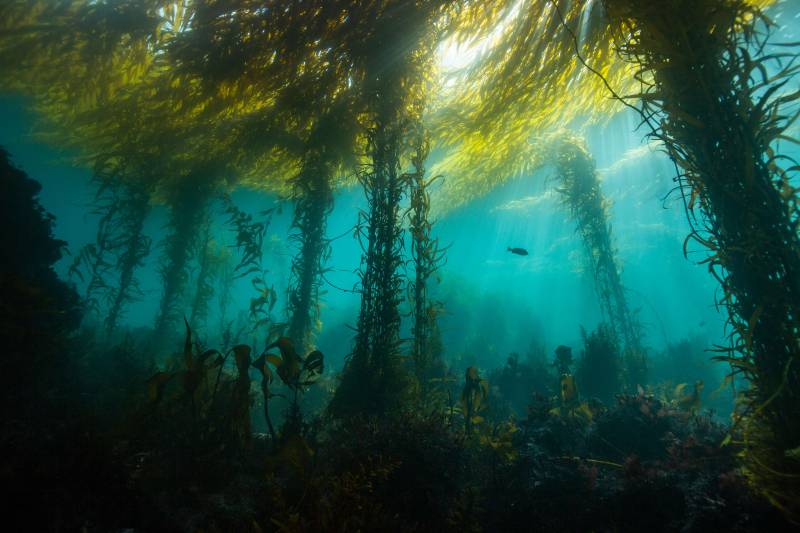 A healthy forest of giant kelp, Macrocystis pyrifera, in Monterey Bay. (Michael Langhans)
A healthy forest of giant kelp, Macrocystis pyrifera, in Monterey Bay. (Michael Langhans)
Smith says this unique phenomenon gave his group an opportunity to look closer at the factors driving the kelp decline and its potential for recovery.
The study, published this week in Proceedings of the National Academy of Sciences, links the presence of sea otters in Monterey Bay to patches of lush, healthy kelp forest.
Smith called Monterey Bay “sea otter country,” pointing out more of the species inhabited the area than any other in the state.
“This is a sea otter country,” Smith said. “We have the highest abundance of sea otters here in Monterey Bay than anywhere else in the state.”
Sea otters, like sunflower stars, are a natural predator of sea urchins.
“The key finding of what this actually means is that otters are so important for this ecosystem because they are maintaining these remnant patches of kelp forests,” Smith said, “And those patches of kelp are the ultimate source populations to help replenish those barren patches.”
The study shows that the sea otter population in Monterey Bay grew in the wake of the urchin boom, with an increased survival rate for pups.
While scientists can’t say for sure, the lack of sea otters and other urchin predators north of the San Francisco Bay may help explain why Northern California’s kelp forests have suffered more than on other parts of the coast.
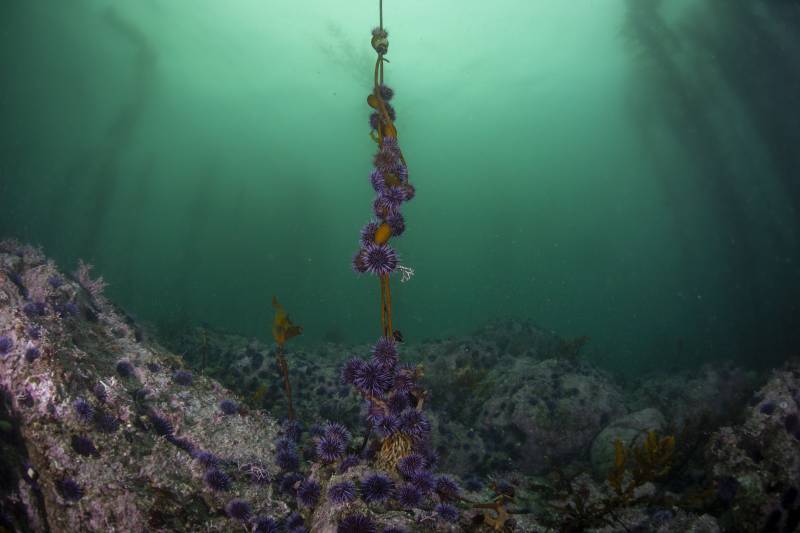 Purple sea urchins feeding on kelp. (Michael Langhans)
Purple sea urchins feeding on kelp. (Michael Langhans)
Sea otters haven’t been spotted on the North Coast since the 1800s, says Meredith McPherson, a UC Santa Cruz marine scientist who recently published a separate study on Northern California’s kelp decline. “From what we observed in the satellite data from the last 35 years, the kelp had been doing well without sea otters as long as we still had sunflower stars. Once they were gone, there were no urchin predators left in the system.”
Without natural predators, McPherson says, scuba divers are helping maintain what’s left of the region’s kelp forests by plucking out interloping urchins. But while ocean temperatures and nutrient levels have normalized some since the 2014-16 heat waves, she says kelp haven’t seen any significant rebound.
“There seems to be some evidence that some patches of kelp have reemerged in certain areas, but it’s nothing to the extent that we would expect from the historical data,” she said. “The concentrations of urchins are still really high and [are] creating the strong grazing pressure on any kind of recovery.”
McPherson says while the urchin barrens persist, a full-scale kelp recovery is unlikely. Even without kelp to eat, urchins have shown resilience.
“That’s where some people have used the term zombie urchin,” Smith said. “These urchins are remarkable in that they can persist in this starved state in the sea urchin barrens for years.”
Smith’s study revealed that otters largely ignore urchins in the barrens, as they lack the nutritional value of those that have kelp to forage on. Scientists say another environmental event will likely be needed to reduce urchin populations and tip the scales in favor of kelp.
“A number of things could take out the urchins.” Smith said. “It could be urchin disease or it could be a bottom-scouring swell that physically wipes sea urchins off the reef.”
In the meantime, otters may be key to kelp’s chance for a long-term recovery.
15 March 2021, 11:20 pm - 6 minutes 47 secondsCalifornia Has a Rule to Protect Workers Against Pandemics. Here’s How It’s (Not) Working
A nation-leading workplace safety rule specifically designed to combat the risks of an airborne virus should have been protecting hundreds of thousands of California workers from COVID-19. The Aerosol Transmissible Diseases Standard took effect 12 years ago — and it anticipated a pandemic. But one year into the pandemic, workers say enforcement is mixed, and problems continue. Regulators at Cal/OSHA have issued more citations on this rule in the last five months than they did in the previous five years.
Hundreds of Thousands of Workers
This rule applies to hospitals and nursing homes, to home health workers and coroners, to jails and ambulance companies: any place where an airborne disease would be expected to appear to catch, hold and spread widely. Employers must have annual training and written plans for exposure. They have to identify activities at work that are high hazard and figure out ways to minimize the risk. They have to have respiratory protection equipment, not just N95s, but sometimes powered air-purifying respirator hoods, called PAPR hoods.
Employees are entitled to medical services like vaccinations and evaluations after someone’s been exposed. And if they get sent home for getting sick on the job, they’re entitled to sick pay.
To be clear, the state of California is one of 14 states that has also passed comprehensive workplace safety standards that apply more broadly to workplaces; they’re called “emergency temporary” standards, even though they’re in effect until 2023 at least. Those separate standards are in litigation, challenged by various trade groups and employers.
A Response to Tuberculosis and Pandemics
One of the reasons the state wanted to make this rule is because there were tuberculosis outbreaks related to unhoused people in the late 1980s and early ’90s. To this day, homeless populations remain at higher risk for aerosol transmissible disease, including drug-resistant tuberculosis.
Since the turn of the century, there have been at least four significant pandemic or epidemic outbreaks. In 2003, SARS spread rapidly from continent to continent, and killed about 10% of the people it infected. In 2009, H1N1, or swine flu, became the first global flu pandemic in forty years.
That’s when California’s Aerosol Transmissible Diseases rule took effect. The Ebola outbreak from 2014-16 then tested the rule, as cases in Southern California threatened quarantine and testing.
A Nation-Leading Rule
After the AIDS crisis in the 1980s, California passed a rule to protect against bloodborne pathogens; the idea was to minimize workers’ exposure to droplets of blood. This protection came to be seen as so essential that the federal government made a rule of its own.
When the state, employers, and workers’ advocates finished negotiating the rule to protect against airborne disease, and it took effect in 2009, the parties involved thought it was going to be nation-leading, according to Mark Catlin, an industrial hygienist and workplace safety expert who has since retired.
But, Catlin says, the state of California lacked the resources to see the rule through completely.
“At some point, the state was going to come up with publications and guidance on it, and those got put aside because there wasn’t staff time to work on it,” he said. “And then there’s been a lot of other staffing issues and problems and budget issues within California over the last number of years.”
Unlike the CDC, which declared COVID-19 to be an airborne virus in October 2020, Cal/OSHA called the coronavirus airborne for the purpose of regulation months earlier, in February. But it wasn’t until May, after the first surge of the coronavirus had ebbed and the second surge was coming, that Cal/OSHA issued guidance about how to deal with COVID-19 as an airborne virus in the workplace.
The first citations for violating that guidance just got released last fall.
Violations Are Now Common
From late in August 2020 to the beginning of February, Cal/OSHA has issued 42 citations with violations of this rule, some for tens of thousands of dollars. That represents a third of the COVID-related citations regulators have issued so far.
Historically, the state has enforced this rule infrequently, writing up just 31 citations in five years. Two-thirds of the violations came from complaints that somebody made specifically, meaning that a complaint prompted the investigation and a state response.
According to Cal/OSHA itself, it can take up to six months to investigate and issue a citation. So what we know about how employers have been protecting workers from exposure to the virus is lagging. But what we do know is that the state has emphasized education rather than punishment for violations during the pandemic.
Workers Say the Rule Hasn’t Meant Much
California identified the coronavirus as airborne before the federal government did — but that doesn’t mean employers necessarily followed suit.
Workers don’t always know about this standard. Some say they haven’t been trained at all, or that their training was minimal.
“In the beginning of the pandemic, they kept insisting we don’t wear masks because it might scare the patients, which I thought was really odd,” said Johnna Porter, a nurse at a hospital in West Hills, in Los Angeles County. “Then they kept telling us, no, no, it’s droplet.”
Porter says, in the years before the pandemic, she did receive a brief training on aerosol transmissible disease. But she says for months, the hospital didn’t have enough protective gear. And she says her employer, HCA, requires nurses to seek approval to obtain tests, or, now that it’s available, the vaccine.
She says she doesn’t trust that her employers are thinking about how to minimize exposure to COVID-19 in the riskiest circumstances. Or even at the nurses’ stations.
“They set it up for the cafeteria in a heartbeat to make sure the food doesn’t get contaminated. And every grocery store has plexiglass now for the cashiers,” Porter said. “But they can’t do it in a hospital? It’s just so mind-blowing.”
State government’s largest union, SEIU 1000, represents some workers at correctional facilities — not the sworn peace officers, but, for example, people who clean the jails. The union filed a statewide grievance last summer about safety on the job, focused on exactly this rule.
SEIU’s Daniel Lunas, says that at first, “the union was very patient and waiting” to see how the state would respond to the pandemic. Then several jails and facilities had horrendous outbreaks.
Now, he says, the state’s still lagging on enforcement and it’s affecting how many people are at work.“So that’s still a problem: the fact that we believe there are still people that are showing up to work, who then should not be there because they may have been exposed or maybe already have the virus,” Luna said.
So far, the state is basically letting its citations speak for themselves. Cal/OSHA declined written requests for interviews over months. The state’s guidance about how to protect workers is organized by industry, not by rule, and it has been updated several times since the pandemic began.
It’s worth pointing out that employers can — and usually do — appeal citations, and that appeals often lower the fines initially proposed.
The COVID-19 Pandemic Tests the Rule
Having protective gear on hand matters early in a pandemic. In the early days, when pretty much every hospital and health-related workplace had PPE shortages, employers basically said, what can we do? It’s impossible to do everything.
“Oh, you know what? That’s BS,” said Angela Dahlgren, a retired nurse who advocated for the passage of the rule. “I’m trying to be nice. Of course, we can prepare for it.”
Nothing requires employers to stockpile PPE. But Dahlgren says employers can think about how to prioritize gear for risky situations, or minimize the number of people at risk in the first place.
The point of the rule, she says, is planning ahead, and investing in being ready over time.
“You can’t go out and educate everybody overnight. That doesn’t work,” Dahlgren said. “You actually have to have all these regulations and policies in place and follow them.”
How California follows this unique standard now is likely to influence the discussion about COVID-19 workplace safety at the federal level — which is, with the Biden administration, a newly active one.
5 February 2021, 10:26 pm - 1 minute 45 secondsOnly 2,000 Monarch Butterflies Remain in California. But They Still Don’t Have Protection
Federal wildlife officials announced this week that monarch butterflies qualify to be protected as an endangered species. But, the iconic insect won’t be receiving that status under the Endangered Species Act due to a backlog of other species in line for protection.
In California, where monarchs west of the Rocky Mountains mostly flock for the winter, numbers have dipped to a record low. Last year, the state’s annual Thanksgiving monarch count revealed less than 30,000 butterflies, down from millions in the 1980s. Early projections from the 2020 survey put the California population at a mere 2,000, approximately.
“We’re at 99.9 percent decline in the population. It’s kind of shocking even for us,” said Emma Pelton, a conservation biologist with the Xerces Society, the nonprofit that runs the count. Pelton says a combination of habitat loss, pesticides, climate change and wildfire is driving the collapse.
“It’s definitely an example of death by a thousand cuts,” she said.
The monarch can’t be protected under the California Endangered Species Act, because a Sacramento Superior Court judge ruled in November that the act does not cover insects. Pelton says that makes federal protection critical.
“It would really be kind of a lifeline to Western monarchs,” she said. “And I think at this point, that’s absolutely what we need.”
The Golden State provides a safe haven for the orange- and black-winged butterfly to escape harsh temperatures while overwintering in coastal forest groves. In the spring, monarchs give birth to the next generation of butterflies, laying their eggs on native milkweed plants. Pelton says protecting this habitat is key for the insect’s survival.
A status assessment conducted by the U.S. Fish and Wildlife Service found that the Western population of monarchs has a 60% or more chance of going extinct within the next decade. While the Eastern migratory population has fared somewhat better, it’s experienced a 70% decline since the 1990s.
Fish and Wildlife published the results of its assessment, which don’t account for this year’s precipitous drop in Western monarch populations, in the Federal Register on Thursday.
“We conducted an intensive, thorough review, using a rigorous, transparent science-based process and found that the monarch meets listing criteria under the Endangered Species Act,” said agency Director Aurelia Skipwith in a statement. “However, before we can propose listing, we must focus resources on our higher-priority listing actions.”
There are currently more than 160 species in front of the monarch in line for listing, according to the agency. Officials attribute the delay to workload constraints and the critical status of other species.
“It gives no protection. That’s I think the biggest takeaway,” Pelton said of the decision. “It’s saying that we don’t have the capacity to deal with this right now.
Without legal protections, the survival of monarchs will, for now, hinge on grassroots conservation efforts from groups like the Xerces Society and others.
“A little bit of a silver lining with monarchs is that all of the efforts to conserve the species across North America have made and continue to make a big difference,” said Charlie Wooley, Fish and Wildlife director for the Great Lakes region, at a press conference Tuesday. “We are just so impressed with the way the American public have raised their hands, gotten engaged in planting milkweed on their private properties in their backyards, developing wildflower gardens that help monarchs and other pollinators.”
Unless the species rebounds, wildlife officials say, monarchs could receive endangered status in 2024.
18 December 2020, 12:13 am - 4 minutes 38 secondsAnalysis: Trump Administration Incompetence Helped Save Environmental Regulations
President-elect Joe Biden has said that the environment and climate change will be top priorities of his administration. On Jan. 20, Biden will not only take the helm of a country shaken by climate-driven disasters like wildfires and hurricanes, but also inherit the consequences of the Trump administration’s rollback of environmental regulations.
To discuss what experts and environmentalists think Biden needs to do to repair U.S. environmental and climate policy, and also the relative ineffectiveness of the Trump administration’s attacks on environmental regulation, KQED’s Brian Watt spoke with Rolling Stone magazine’s chief research editor, Hannah Murphy, who wrote in September about the environmental challenges a Biden administration would face. The following excerpts have been edited for length and clarity.
So how bad is it? How much damage did Trump manage to do to environmental regulations?
Hannah Murphy: It depends on how you measure it. The Trump administration came in with one of the most anti-environmental agendas in U.S. history, and we did see them roll back around 100 environmental regulations, which is enormous. That can’t be discounted.
But the saving grace here is that, according to experts and advocates I talked to, the Trump administration was really quite bad at it. The rule-making process is very procedural. The administration was predominantly making executive rules, and in that process they rushed through it. In many cases, they skipped over the public comment period, which is a key legal process in making these rules.
By doing that, they opened up an obvious opportunity to take them to court, where advocates have been incredibly successful. So far they’ve challenged more than 80 rules and won nearly 70 of them. So all of these have been tied up throughout the courts, and the administration hasn’t seen any significant progress in its agenda. Instead they’ve really just cost us four years of time.
So does Biden just go in and try to reinstate these regulations that Trump tried to roll back?
That’s where we come back to the rule-making process. The big work that the Biden administration is going to have to do is spend 18 months to two years reinstating all of these regulations, and doing them correctly, unlike the Trump administration. He needs to learn from that process of cutting corners and really do it right. That will take the first half of his term, but it can really help them stick, because right now we also have a makeup of the courts that we weren’t anticipating coming into this election. So these rules need to be bulletproof if they’re going to not be challenged by a six to three Supreme Court.
What do the experts and advocates say that Biden should start on, Day One?
There are a lot of options. Just like we saw with the Trump administration, the executive branch has a lot of power to take action on environmental issues.
The most pronounced option is for the Biden administration to declare a national climate emergency. This would very explicitly reposition the U.S. as a player in the fight against climate change. Both nationally and internationally we’ve lost that standing in a lot of ways.
Not only would it send an important message, it would give the administration practical power to mobilize the government. It would also allow the U.S. to use the might of the American military by directing it toward the challenges of climate change and clean energy development. And it would give them the tools necessary to treat climate change as serious of a crisis as it is.
But, does Biden have the mandate to do something that forceful?
Many advocates would argue he does. When the Obama administration took office, only 30% of Americans believed protecting the environment should be a top priority for the government. Now, two-thirds of Americans believe that. That is a dramatic change. Climate was a huge part of Biden’s campaign, and it’s part of what got him into office. I think the political mandate is there. As recently as September, Democratic voters were ranking climate change as one of the most important issues in this election.
You mention we have lost four years to climate inaction. Is there one thing Biden should do that would cut greenhouse gas emissions the most?
Transportation is key — it’s the largest contributor to U.S. greenhouse gas emissions. The Trump administration loosened the Obama regulations for fuel economy standards, so we have a whole generation of cars being built under Trump’s loosened rules; those vehicles are going to be on the road for 10 years. So restoring the fuel economy standards would be hugely impactful. The sooner we make those changes, the sooner we can rectify that.
Reports say that Mary Nichols, head of California’s Air Resources Board, is on the short list to run the Environmental Protection Agency. How important would that be?
Biden’s short list is ever evolving and includes some incredibly heavy hitters like Mary Nichols. Whoever does take that job has an enormous task ahead of them. The agency has been drained of staff; many people and advocates weren’t willing to stay on board when the Trump administration took over. And then the administration moved staff out of D.C. — a lot of really bizarre moves. So the most important thing that whoever is in that role can do is on day one start rebuilding the agency. So whether it’s Mary Nichols or any of the several other people on that short list, they have a huge job ahead of them.
President Trump has put his weight behind fossil fuels. What can Biden do that would redirect investment into renewable energy and jobs?
Biden’s climate plan is in large part also a jobs plan. In redirecting job-building toward a focus on clean energy, you can move enormous amounts of research and resources toward this work. It’s one of the enormous benefits of having a comprehensive climate plan.
But that is a much longer process, and Biden would actually have the power on day one to help keep more fossil fuels in the ground. Biden has a lot of tools that he can use right away. He can direct the secretary of the interior to halt oil and gas leasing and fracking on federal lands. We used to have a ban on exporting crude oil that he could reinstitute. He can halt the development of fossil fuel infrastructure.
Reports say President Trump is trying to fast-track oil drilling in the Arctic National Wildlife Refuge. How likely is that to be successful?
Right now, it’s hard to say because we don’t know exactly how he plans to go about this. There are a couple of ways this could go.
This was I think the biggest concern heading into a potential second term for Trump, because in a lot of the conversations I had, I kept hearing, “Well, you can fix regulations, but you can’t undrill a well.”
But we won’t have another four years of Trump, and this process takes longer than a couple of months. The Trump administration is going to rush this through. They have already made clear that they’re not going to observe the traditional processes here, but any of these sales are very likely to be subject to review by agencies that are within the Biden administration come January, including the Bureau of Land Management and Justice Department. That process will take a month or two, and could allow the Biden White House to deny these leases.
Biden hasn’t indicated how he plans to do that. Many advocates have argued that the scientific assessment of the areas that they’ve put up for sale isn’t sound. And that is certainly one way the Biden administration could undermine this. So there are options. But we have to wait and see what the Trump administration does in the next couple months.
1 December 2020, 7:25 pm - 2 minutes 25 secondsWhat Is the True Cost of California Wildfires? No One Really Knows
Amid a record-breaking fire year, a new report out Thursday says the state lacks a grasp on the true costs of wildfires. The report is from the California Council on Science and Technology, an independent nonprofit organization established to offer state leaders objective advice from scientists and research institutions.
Ahead of the CCST’s public briefing, set for today at 12:30 p.m., KQED spoke with Michael Wara, director of Stanford’s Climate and Energy Policy Program. Wara led the team that assessed wildfire costs in the state. This interview is edited for length and clarity.
Why did the council want to look at wildfire costs?
Michael Wara: Our fire problem is getting worse. Rapidly worse. So we need to figure out as a state what to do about this, but it’s very hard to know what to do about it if your view is kind of partially blocked, if you’re blind in one eye, and that’s kind of where we are with this problem.
No one is collecting the whole budget and trying to understand what our expenditures really are to then compare them to our losses and say, “Is this the right amount? Are we spending too little? Are we spending too much?” And that’s the best way to develop policies — with good information.
How do you get a grasp on the true cost of wildfires in the state? By looking at budget spreadsheets?
Wara: It’s actually surprisingly difficult. We can do that for Cal Fire’s budget, but not for other costs to the state. We thought this would be a much simpler problem. Even framing the costs becomes a conceptual problem. For example, to many people, insurance appears like a cost. But you could argue insurance is just moving money around — who pays for a fee, basically. We thought there would be some sort of thorny conceptual issues, but we did not understand when we first started the work, that there were so many places that we aren’t actually measuring the costs. And we didn’t understand, I think, how large the costs were in areas that are not well measured.
Where are we not measuring the costs?
Wara: There are two big areas. The first and arguably the most important is in terms of the public health impacts; the most important of those is the smoke impacts. The morbidity and mortality impacts, deaths and sickness, from wildfire smoke are an incredibly important public health issue for the state of California. They’re not systematically measured.
This is an area of developing science, but what we uncovered leads us to believe that there are many, many people dying from smoke-related causes due to wildfire in California, and probably many more people being admitted to emergency rooms with respiratory distress or other health-related problems.
Another place where we really don’t have a good systematic look, but we’re increasingly concerned, relates to the ecosystem impacts of fire. Wildfires at the scale that we’re experiencing now in California have big impacts on aspects of ecosystems that we depend on very heavily for our well-being in society. In particular, impacts on water resources are large, but not well accounted for.
Some of these problems are very complex. Do you think truly tracking the cumulative and comprehensive costs of wildfires is possible?
Wara: I think we can do much better. And I think it’s going to change the politics of taking action to reduce risk. That’s because if you’re having a conversation about, say, fuels management, it’s one conversation when you’re talking about the private landowners in question, the fire agencies, and maybe environmentalists who are concerned about trees and ecosystems. It becomes a different conversation when you’re talking about the health of 40 million Californians.
Why is it important to know all of the costs of factors we haven’t considered before?
Wara: The reason to fully value the cost is it gives us a sense for what we should be willing to spend to avoid these harms.
Is the second part of that, that we should be spending a lot more than we are currently?
Wara: I think everyone on the report steering committee would say, “Yes.” But we shouldn’t necessarily be spending it in the same way.
At the same time as we maintain our commitment to having the best firefighting agency in, frankly, the world — Cal Fire is an amazing organization — we need to grow our spending on the aspects of the problem that will make it easier for firefighters to gain the upper hand when fires inevitably occur. That has to do with fuels management, building safer communities, using land as a tool to reduce risk, and “home hardening” — reducing the chances of home ignition. That makes it easier for firefighters to fight fire and also easier for communities to recover afterward.
I’ve heard of benzene getting into water from plastic pipes after a fire. What are some of the broad impacts on water quality?
Wara: Ash is a big issue, as is runoff from burned landscapes where there were developments, vehicles and houses that burned. If ash gets into the surface water flow and contaminates streams and reservoirs it becomes a huge issue. When you burn down a house, you’re creating a pretty toxic mixture of ash, and if that isn’t managed well, runoff can be really deleterious to water quality. Sediment, erosion and landslides also become big problems. A landscape may retain less water after a bad fire, contributing to drought.
But we don’t really understand these impacts very well. Typically there might be a study on sediment for, say, this fire. And there’ll be a study on salmon habitat for that fire. But we don’t, in any systematic way, look at the impacts on water quality, quantity or the movement of water within watersheds from all big fires. However, we know enough to be seriously concerned given the scale of wildfires that the state has experienced since 2017.
What are some of the key recommendations of the report that you would like people to know about?
Wara: A key conclusion of the report is that public health impacts from smoke are a big part of the picture, so we should think about wildfire not just as a problem for people who live in the wildland urban interface, but as a statewide problem. It has important equity impacts as well. The smoke impacts people most who have to work outdoors, who live in older housing that’s not as tightly sealed as newer, more efficient buildings.
Another key takeaway from the report is that there is no one-size-fits-all solution for wildfire. So we need to think about regional solutions in a state as big as California.
The other thing I would say is that climate change is a big factor in driving what is happening in California, but so are many other things. And that’s actually a good thing because it means that there are many things under the state’s control that we can do to make this problem better.
So, if a problem has multiple causes, then there are multiple ways to address it as well.
Wara: That’s right. Exactly.
29 October 2020, 12:00 pm - 7 minutes 17 secondsFrom Condoms to Coronavirus Masks, ‘Harm Reduction’ Has Worked to Protect Public Health
We’re in the middle of the worst public health crisis in a century, one in which adherence to public health guidelines makes all the difference between an out-of-control pestilence and a serious but containable emergency.
California, at the beginning of the coronavirus pandemic, slowed what looked to be its inexorable spread with an extraordinary yet simple solution:
Shut it all down. Everything.
But aside from the economic consequences of sheltering an entire state in place, public health officials were aware of another reason that asking people to remain totally insulated from the dangers of the coronavirus would have diminishing returns:
From a public health perspective, pasting a proverbial big X over something is frequently a losing bet.
“To get people to change their behavior, to forbid them to do something is not usually successful,” said Dr. John Swartzberg, clinical professor emeritus at the UC Berkeley School of Public Health.
Swartzberg points to the U.S. ban on alcohol, in effect from 1920 to 1933, as a historical example.
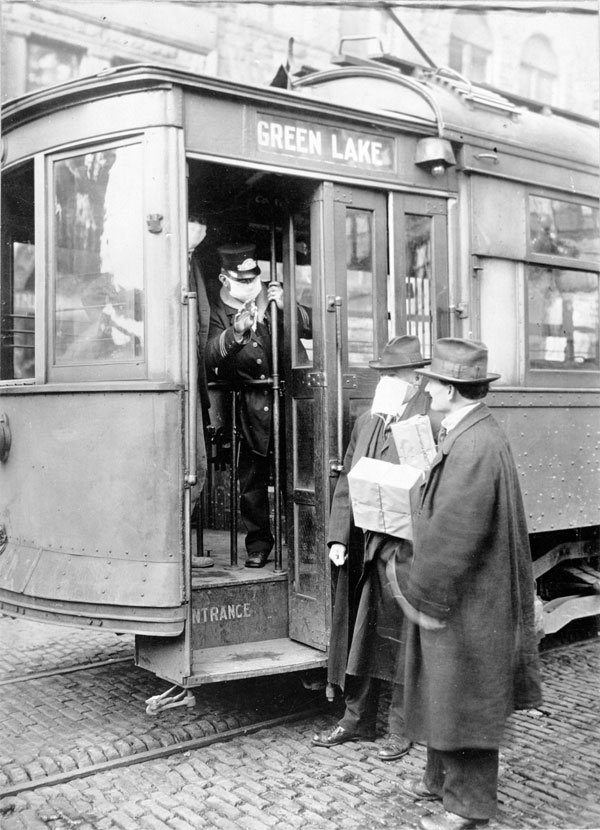 A streetcar conductor in Seattle won’t allow a passenger aboard without a mask in 1918. (U.S. National Archives)
A streetcar conductor in Seattle won’t allow a passenger aboard without a mask in 1918. (U.S. National Archives)
Prohibition, Swartzberg says, was a “puritanical” approach to eradicating real societal ills associated with drinking. But it was ultimately repealed, and it’s widely viewed as a failure due to unintended consequences that included the rise of organized crime through bootlegging and the deaths of people who consumed toxic illegal alcohol.
Today, governments use a well-established strategy called harm reduction to help mitigate the negative effects of not only alcohol but a host of other public health risks, including the spread of COVID-19.
The basic principle behind harm reduction: Don’t tell people they absolutely can’t do something, because it won’t work as well as allowing the behavior, but with added rules to reduce risk.
If Prohibition is a cautionary tale of what happens when harm reduction is left out of the equation, the concept of safer sex is a textbook example of how it can work.
In the earliest days of the HIV crisis, Swartzberg says, health officials promoted an abstinence-only message.
“That clearly didn’t work,” he said, so it was dropped in favor of encouraging people to engage in practices like using condoms and getting tested for the virus.
“We know you’re going to go have sex. But if you’re having sex, here’s what you can do to reduce your risk and your partner’s risk. That was a much more successful policy. It’s the same thing with what we’re talking about with COVID.”
As scientists continue to work on therapies to address the disease, Bay Area health officials have made one thing clear: Social distancing and masking, ways of reducing risk from the coronavirus, are here to stay for a good while longer. A safe and effective vaccine may be at least several months away; meanwhile all the data has shown that wearing masks and avoiding indoor gatherings are keys to slowing the spread of the disease.
While many months into the crisis people may be suffering mask-wearing and social distancing fatigue, public health experts say the rules are designed to actually allow people more freedom, not less, compared to the constraints of a strict lockdown.
The incremental reopening of different parts of the economy as California counties move through the state’s risk assessment levels is a case in point for how a society can modulate harm reduction in response to changing circumstances. At the highest risk level, the state allows shopping malls to open at 25% capacity; at the next highest, it’s 50%; and at the next, 100%, but with closed common areas and reduced-capacity food courts. In other words, the harm reduction measures ratchet down as the risk subsides.
Buckling Up
Passing safety laws and getting people to embrace them can take years or even decades. While it’s standard practice now for us to buckle up before pulling out of the driveway, modern automobile seat belts weren’t invented until the 1950s, a half-century after Ford brought motorcars to the masses with the Model T. The idea for retractable belts in passenger cars is credited to a neurologist in Pasadena, who’d been treating a large number of patients suffering from head traumas sustained in car crashes.
But the U.S. didn’t require car manufacturers to equip vehicles with seat belts until1968. Even then, no law required passengers to wear them. That occurred in the 1980s, when states began mandating people to buckle up or risk a fine.
With COVID-19, Swartzberg says, we can’t afford that long of an adjustment period; people have to embrace harm reduction now to keep the virus from spreading. Most public health officials agree that the lack of consistent messaging from federal leadership about the efficacy of these practices has been a major barrier to fighting the pandemic in the U.S. For example, a recently released study by Cornell University researchers found that President Trump is “likely the largest driver” of COVID-19 misinformation.
Secondhand Smoke
Some health experts say the lessons learned from anti-tobacco campaigns show that certain strategies may be more effective than others at changing people’s behavior.
Dr. Richard Jackson, professor emeritus at the UCLA Fielding School of Public Health and a former state of California public health officer, says getting to the point where bans were enacted on smoking in public spaces like restaurants, planes and parks took years. What eventually tipped the scales for lawmakers and the American public, Jackson says, was not the message that smoking is bad for you, but rather that lighting up can harm other people.
“It was when we showed that flight attendants were actually getting sick from being in a confined space with a lot of smokers, that was the beginning,” Jackson said. “But eventually, over time, it led to the ban of indoor smoking.”
It wasn’t until 1995 that California paved the way for smoking bans when it became the first state to outlaw smoking in indoor workplaces.
Behavioral economists have a name for actions that affect not ourselves but other people or the whole of society: externalities.
Mask wearing can reduce the externalities of leaving your house during the COVID-19 pandemic because studies show that it helps prevent virus transmission to other people, who may not even know they’re contagious.
When it comes to choosing not to wear a mask, Jackson says, a person might argue: “It’s my life, I can take that risk.” But helping them understand that flaunting this precaution can endanger a child, a loved one, an innocent bystander — what Jackson calls “sympathetic victims” — may encourage holdouts to think twice about ignoring public health orders.
Cultural Differences
The coronavirus pandemic isn’t the first time Americans have been asked to pull masks over their faces, avoid crowds, and subject themselves to a shutdown of parts of the economy to fight a deadly virus.
Doctors prescribed a strikingly similar regimen to fight the 1918 Spanish influenza pandemic, says Dr. Lee Riley, head of the infectious disease and vaccinology division at the UC Berkeley School of Public Health. An estimated 50 million people worldwide and 675,000 in the U.S. died from complications caused by the virus, according to the U.S. Centers for Disease Control and Prevention.
“If you look at some pictures from that period, a lot of people were wearing masks,” Riley said. “They washed their hands, kept social distance, and local governments tried to make sure that people didn’t congregate in large numbers, everything that they’re saying right now.”
Studies suggest public health measures reduced the 1918 flu pandemic up to 50 % in some cities where they were implemented early on.
“That was a big pandemic, almost two years,” Riley said, “And eventually this virus petered out. So the public health measures work.” He added that the pandemic was contained long before the first approved flu vaccine, which was developed in the 1940s.
Riley points out that wearing masks to thwart disease has become the social norm in some countries around the world, particularly in Asia. He grew up in Japan in the 1950s and remembers wearing a mask to elementary school.
Because reliable vaccines to fight influenza or bacterial respiratory diseases didn’t yet exist, wearing a mask was the primary way people kept from getting sick, Riley says. But there was also a cultural incentive.
“There’s a phrase in Japan that was instilled in all little kids: Never cause harm to strangers and your neighbors,” he said. “And so one major driving force why people will wear a mask is not just to protect themselves, but also (to) prevent the transmission.”
Japan, Riley said, is a more socially conscious culture when compared with more individualistic societies in the West. When it comes to fighting the pandemic, he says the U.S. could benefit from this baked-in harm reduction philosophy.
“I think, you know, Americans are not that different from other people when they start really thinking about this.” he said. “And when we have a good leadership model, we can really serve as a model.”
Jon Brooks contributed to this report.
13 October 2020, 8:30 pm - 7 minutesMillions of Older Californians Live Where Wildfire Threatens. Mostly, They’re on Their Own
The fire refugees kept calling, all of them elderly, all of them newly homeless after Paradise burned in 2018. Some 70 miles to the south in Grass Valley, Katrina Hardin answered those calls. Hardin managed a senior apartment complex — none were available, so she begged her friends to open up their spare rooms.
The demographics of the victims haunted her: About three-quarters of those who died in the Camp Fire were over the age of 65. Same with the fires that ravaged Sonoma and Napa the year before. Hardin fears for people in her own Nevada County, known as a haven for retirees, where 96% of the land is at heightened risk for wildfire.
“We’ve got all these elderly people — their sons and daughters may be living in Southern California, in the Bay Area, in another state,” Hardin said. “The elderly are living by themselves here with just their neighbors.”
Across the state, about 2 million people age 65 and older live in areas where wildfire is a serious threat, according to a KQED and CalMatters investigation.
But at the state and county level, no public agency has legal responsibility for ensuring that these older adults are able to evacuate in a disaster. The county response involves alerting residents of immediate danger and providing evacuation shelter, but not the evacuation in between.
Areas Prone to Fire
Credit: Lisa Pickoff-White/KQED and Lo Bénichou/CalMatters
Source: Cal Fire’s Fire Hazard Severity Zones, SILVIS lab at the University of Wisconsin Wildland Urban Interface and Natural Earth.“There is no regulatory mandate for us to check on individuals,” said Tamaran Cook, former head of adult services and in-home health services for Nevada County. “There’s nothing statutory that’s consistent across all the counties in the state.”
The county has generally relied on aggressive outreach to help people with fire preparation — hosting informational meetings, sending newsletters. The county even produced a movie trailer that plays at the beginning of films in theaters, featuring people packing go bags and cleaning gutters. The county asks people not to overburden 911. Across formats the message is consistent: get yourself ready, because if a fire comes, you’re on your own.
Warning the Elderly Only Goes So Far
Last year, the state launched an effort focused on locating and warning people deemed especially vulnerable.
“You’re looking at seniors. You’re looking at people with disabilities. You’re looking at people in poverty. You’re looking at non-English-speakers,” said Karen Baker, the co-director of Listos, a program of the California Governor’s Office of Emergency Services.
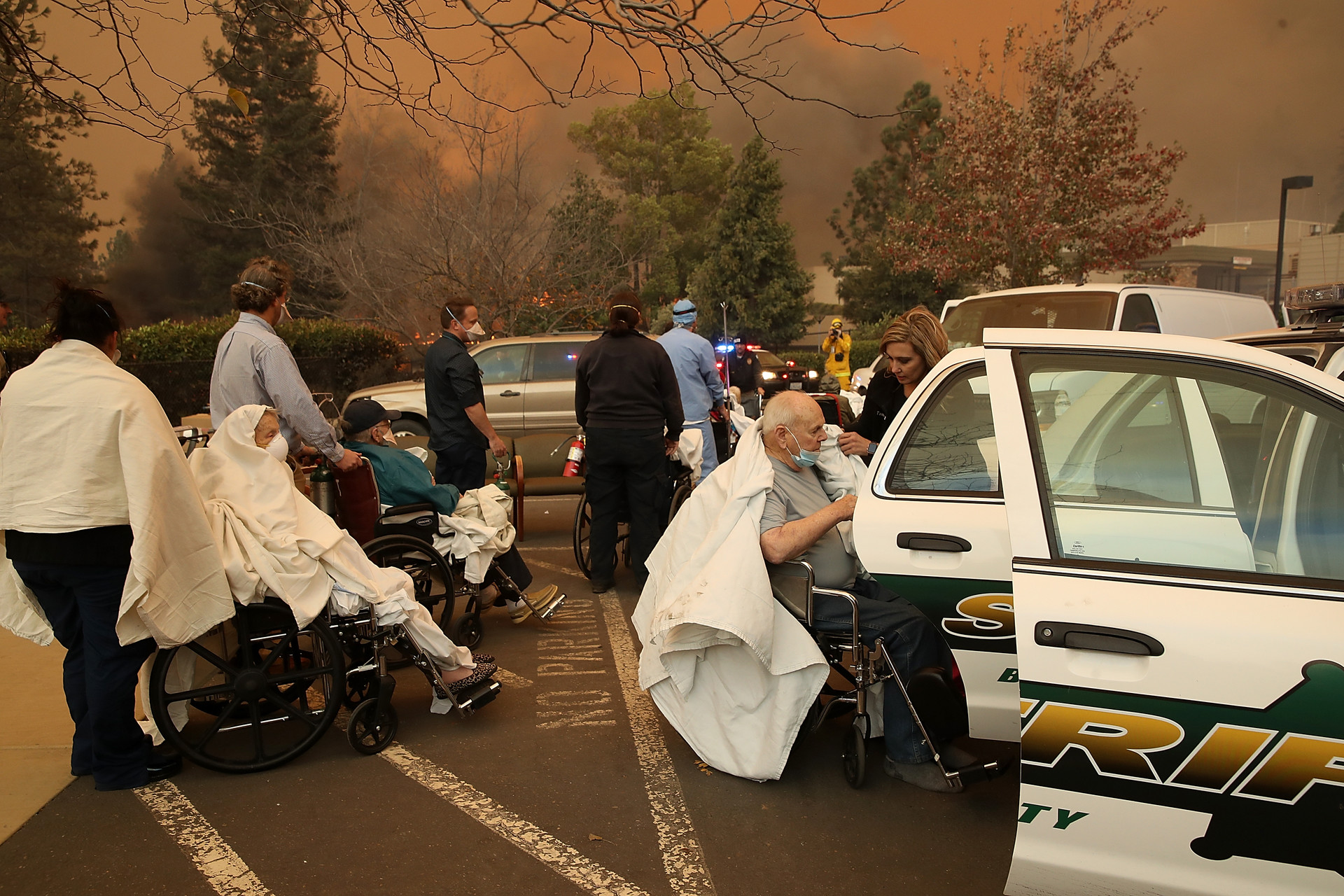 Older and OverlookedIn 2019, Listos granted $50 million to dozens of nonprofit and community groups, and created vulnerability assessments for every county in the state. In Napa and Sonoma counties, Listos has worked with volunteer and religious groups to offer go bags, gift cards and free produce to encourage low-income seniors to come to emergency training sessions.
Older and OverlookedIn 2019, Listos granted $50 million to dozens of nonprofit and community groups, and created vulnerability assessments for every county in the state. In Napa and Sonoma counties, Listos has worked with volunteer and religious groups to offer go bags, gift cards and free produce to encourage low-income seniors to come to emergency training sessions.
In Sonoma, emergency managers facing growing public expectations after multiple fires have promoted new alert systems — including a NOAA weather radio that can shake the bed when someone’s sleeping.
Still, advocates say, the elderly are overrepresented in death counts after wildfires and during the current coronavirus pandemic, where nursing homes have been particularly hard hit.
“If these were children’s hospitals and children were dying like wildfire in them, there would be a very different community response than there is now,” said Debbie Toth, CEO of Choice in Aging, an advocacy group for seniors living independently. “Like, ‘These are just disposable people: They’re elderly, they’re at the end of their life anyway, there’s no value there.’”
Elderly People, in Particular, Suffer After Disasters
Disasters destabilize older adults, geographically, physically, financially and emotionally. Every bit of that happened to Jerry Canaday, 68, when he lost his home in the 2017 Tubbs Fire.
If rescuers came that night, Jerry Canaday slept through the knock at the door.
The noise of the fire woke him. “Like a storm,” he said. He walked out his door to see chunks of debris, in flames, falling heavy through the sky.
Canaday drove himself out of his Santa Rosa neighborhood, sleeping in his car that first night. Then he moved to an evacuation shelter set up at Finley Community Center. Weeks after the fire, some other men shook him awake in his cot when he almost stopped breathing. Doctors in the emergency room blamed the combined effects of smoke inhalation, pneumonia and heart failure.
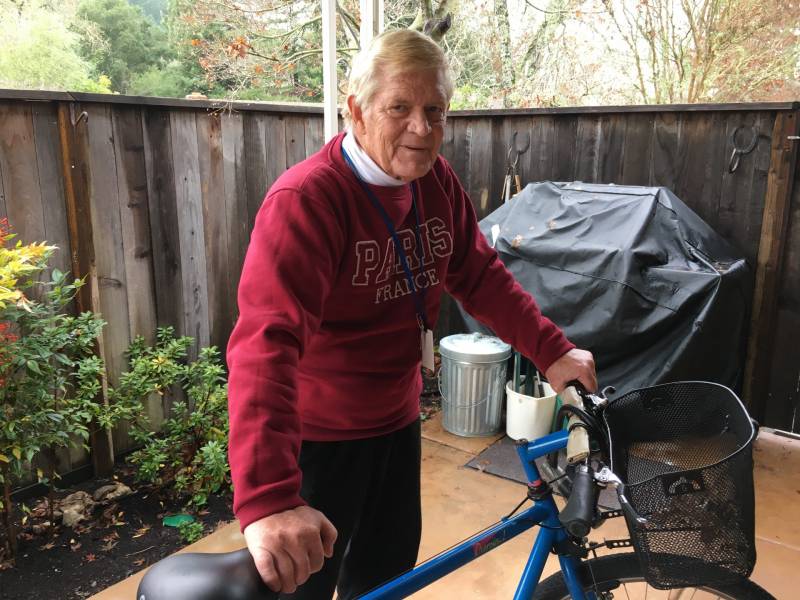 Jerry Canaday, 68, likes to say he’s going on 31, even after the Tubbs Fire took his money and his health. (Molly Peterson/KQED)
Jerry Canaday, 68, likes to say he’s going on 31, even after the Tubbs Fire took his money and his health. (Molly Peterson/KQED)
Canaday’s house was uninsured. After it burned to the ground, he called a FEMA trailer home for almost two years. He stayed longer than FEMA intended, because it was so hard to find a room to rent that he could afford.
“It’s another one of those, one step forward, 12 steps back,” he said.
Canaday’s new residence is in a risky area, by KQED’s analysis. He can no longer drive, his license suspended for medical reasons.“I feel isolated,” Canaday said. “I don’t feel connected so much as I’d like to.”
Last fall, evacuation orders forced Canaday from his latest home when the Kincade Fire threatened Santa Rosa. Even his cat, Gigi, is a refugee from the Camp Fire in Butte County — a constant reminder of their shared survival, and risk.
“Just when you think you’re safe and nothing’s going to happen,” he said, “here it comes again.”
Californians don’t like being told where to live, even after a disaster.
That’s why we have to learn to live with wildfire and adapt to the increasing risks brought by climate change, says Max Moritz, a UC Cooperative Extension wildfire specialist.
“To finally come to a coexistence with wildfire: that is a whole different way of thinking and living with a given hazard,” he said. “It means that we have to be ready for them and we have to look out for the most vulnerable people when they do come.”
Building a Community to Save One
Rosemarie Reeder and her neighbors have decided to develop a buddy system to look out for the most vulnerable among them. Nevada County has one of the highest rates of residents over 65 in the state: 24.4 compared to the statewide average of 16.5, according to the U.S. Census Bureau data.
“It’s a lot of retirement up here,” she said. “Various people have walkers, some are in wheelchairs.”
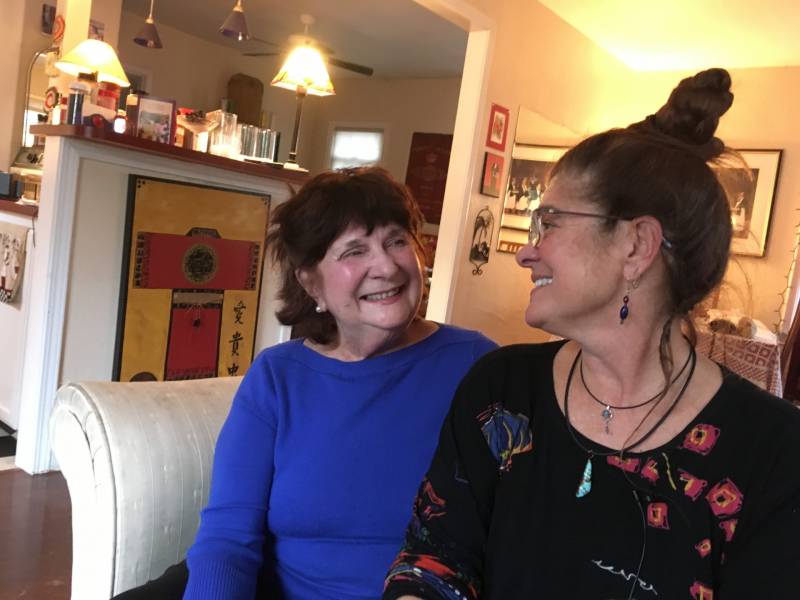 Rosemarie Reeder (left) and Katrina Harden (right) in Grass Valley during December 2019. (April Dembosky/KQED)
Rosemarie Reeder (left) and Katrina Harden (right) in Grass Valley during December 2019. (April Dembosky/KQED)
Their buddy system is mainly informal pairings at the moment, she says, verbal agreements between neighbors decided while out walking the dog or pushing the stroller. Reeder would like them to make a more formal list, and she wants them to practice.
Before the coronavirus pandemic, her neighborhood fire coalition had planned to do a full evacuation drill, where everyone would get in their cars and drive the roads they would follow to get out of town during a fire. Reeder wants them to also rehearse buddies checking on each other. And she wants other towns across the state to follow their lead.
“It’s vitally needed, especially in these days, with as much climate change as we have had, we really don’t know what’s coming next and we need to prepare for it.”
The majority of California land is fire-prone, according to an analysis by KQED and CalMatters of state-designated fire zones and scientific maps showing where wildland meets cities.
In 23 counties, more than 75% of people age 65 or older live in risky areas, according to a KQED and CalMatters analysis.
Counties Where Older People Largely Live in Fire-Prone Areas
Credit: Lisa Pickoff-White/KQED and Lo Bénichou/CalMatters
Source: Cal Fire’s Fire Hazard Severity Zones, SILVIS lab at the University of Wisconsin Wildland Urban Interface, Natural Earth and the 5-year 2018 American Community Survey.Katrina Hardin says the old-fashioned, in-person connection of the buddy system is key for older folks like her mom who don’t use social media outlets the county and community increasingly rely on to share wildfire information.
“This is really the most important area to have a buddy because you’re dealing with people who are used to communicating face to face,” she said.
Until recently, Hardin lived with her mom and would do all her Googling and social media surfing for her. She played the police scanner app on her phone constantly, while they did housework together and for hours before bed, to monitor for wildfire activity, because she knows the fires will keep coming.
“We can see what happened at the Camp Fire, but who is doing something different so it doesn’t happen to us?” Hardin said. “Apparently, it’s my responsibility. It’s my mom’s responsibility. It’s not the authorities’ responsibility.”
CalMatters contributed data analysis, editing and graphic design to this project. CalMatters.org is a nonprofit, nonpartisan media venture explaining California policies and politics.
Capital Public Radio contributed photos to this series. As the NPR member station based in Sacramento, CapRadio serves California’s Capital region, Central Valley and Sierra Nevada.
14 August 2020, 2:01 pm - 1 minute 49 secondsCalifornia AG Wants More Companies to Be Able to Make COVID-19 Drug
Doctors say the antiviral drug remdesivir is one of the few treatments that benefits patients hospitalized with COVID-19. But the drug, made by Gilead Sciences, can cost more than $3,000 for the full course of treatment, and some hospitals — including several in the Bay Area — say it’s in short supply.
Foster City-based Gilead is currently the only company making remdesivir, and AmerisourceBergen is the sole distributor.
On Tuesday, California Attorney General Xavier Becerra sent a letter to federal health officials, urging them to allow other companies to manufacture and distribute the drug.
The letter, which was addressed to top officials at the U.S. Department of Health and Human Services, the National Institutes of Health, and the federal Food and Drug Administration, was endorsed by a bipartisan coalition of 34 state attorneys general.
Gilead has announced plans to make 2 million courses of remdesivir, which can be either six or 10 vials, by the end of the year. Becerra’s letter calls that amount “dangerously low” to handle current or future coronavirus outbreaks.
He says now is the time to produce more of the drug.
“If Gilead is not prepared to do it,” he said, “We have the right to say we’re going to try to do whatever we can, go wherever we must, to ramp up the supply.”
No ‘Secret Sauce’
Because the development of remdesivir was supported in part by federal tax dollars, including a $30 million NIH-funded clinical trial, Becerra says there are legal grounds for Washington to intervene.
“It’s not as if there’s a secret sauce here,” Becerra told KQED. “Folks know how to make this drug and the taxpayers helped make that drug possible. Let’s get it out there to folks.”
Under the Bayh-Dole Act, the letter says, the federal government could make Gilead license its remdesivir patent to third party manufacturers.
An HHS spokesperson wrote in an email that because remdesivir wasn’t, “as a whole,” funded by the federal government, it doesn’t believe the Bayh-Dole Act applies in this case.
Gilead said in a statement it was “deeply disappointed” by the letter, and that it misrepresented the overall need for its drug:
“One significant factual error is the assertion that all 3.5 million current COVID-19 patients should be treated with remdesivir. This assertion ignores the fact that not all COVID-19 patients are eligible to be treated with remdesivir and, thankfully, many will recover prior to hospitalization and never need the drug.”
Remdesivir was shown in one controlled clinical trial to reduce median COVID-19 hospital stays by about four days.
Desperate Hospitals
Dr. Peter Chin-Hong, an infectious disease specialist at UCSF, says that on Tuesday the hospital was down to two vials of remdesivir, with another shipment expected, but not guaranteed, to arrive soon.
Chin-Hong says local hospitals have sent each other vials of remdesivir, when able, so that their COVID-19 patients can get the treatment.
“We’re definitely desperate for the drug,” said Chin-Hong. “At the clinical end, health care providers currently in 2020 spend a disproportionate amount of time bartering [the] drug, sourcing the drug, trying to play remdesivir Tetris where we’re constantly figuring out, do we have enough?”
With the expectation of another coronavirus surge this winter, Chin-Hong says suppliers need to come together to make more remdesivir.
“The timing of the attorney general’s letter is actually perfect,” he said, “because if we decide to do something now, we could have an impact on that winter surge.”
5 August 2020, 11:29 pm - 4 minutes 42 secondsMeet the Plants! SF Botanical Garden Looks Like Willy Wonka’s Chocolate Factory for Flora
Stepping onto the 55-acre grounds of the San Francisco Botanical Garden feels a bit like entering the chocolate room at Willy Wonka’s factory, if that storybook setting were bursting with real plants instead of ones made of candy.
Located in the heart of Golden Gate Park, just blocks away from bustling city life (though not as bustling during these days of the pandemic), the garden is home to an astounding array of more than 9,000 types of flowers, plants and trees from across the globe. When not subject to various levels of quarantine, roughly 400,000 visitors a year tour the grounds, which are open seven days a week and are free to city residents. Horticulturist John McLaren, the Golden Gate Park superintendent for over 50 years, first devised plans for the garden in the late 1800s. But funding problems prevented an official opening until 1940.
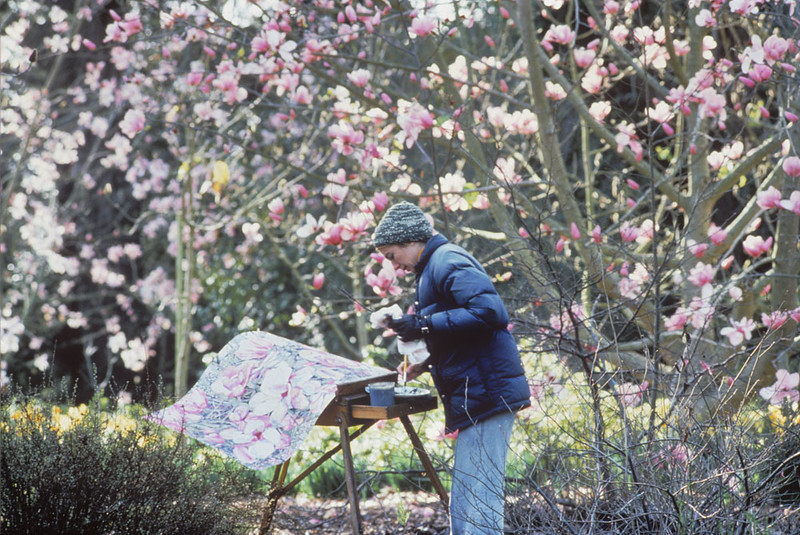 Artist Patricia Forrester painting magnolias in the garden in 1978. (Courtesy of the SF Botanical Garden)
Artist Patricia Forrester painting magnolias in the garden in 1978. (Courtesy of the SF Botanical Garden)
Here they can take in velvety pink and magenta flowering magnolias from the Himalayas; endangered South African proteas that grow on a single mountain; and something called a monkey puzzle tree, a rare evergreen from Chile with limbs of sharp, succulent-like leaves unfolding from its trunk. As for native species, the garden hosts everything from California lilac to giant sequoias.
In this 150th year of Golden Gate Park and 80th of the Botanical Garden, the garden has unveiled plans for a brand new nursery to advance its mission of preserving endangered plants increasingly threatened by climate change.
From Big Beach to Big Garden
Staring out at the sanctuary’s lush lawns and winding forested foot trails, it’s hard to imagine this was all once nothing but sand dunes.
Before Golden Gate Park was established in 1870, the dunes stretched out over its thousand-acres, extending east from Ocean Beach, where San Francisco meets the Pacific at the edge of the continent.
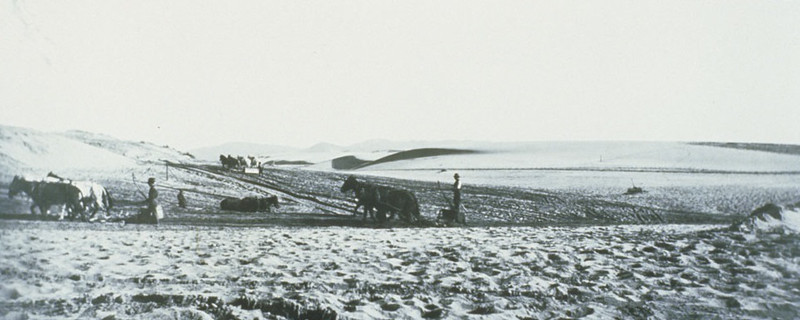 Golden Gate Park, as pictured in the late 1800s, was once sand dunes stretching east from Ocean Beach. (Courtesy of SF Botanical Garden)
Golden Gate Park, as pictured in the late 1800s, was once sand dunes stretching east from Ocean Beach. (Courtesy of SF Botanical Garden)
“This was just a big dune all the way out. If you dig down 2 feet anywhere here, it’s gonna be sand,” said garden docent Kyle Pierce, while leading a tour in late February, just weeks before the pandemic shut the garden down for several months. It reopened in June, with safety protocols requiring masks and a capacity limit of 2,500 people.
To transform the terrain from beach to garden, he says, the city plowed in horse manure and nutrient-rich soil, so plants could take root and thrive.
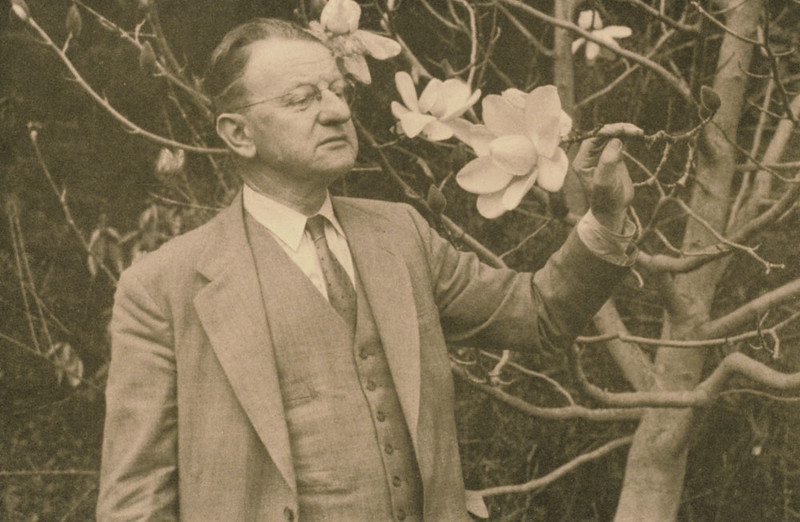 Eric Walther, the garden’s first director, pictured next to a blooming Magnolia campbellii, his favorite plant, in the 1940s. (Courtesy of the SF Botanical Garden)
Eric Walther, the garden’s first director, pictured next to a blooming Magnolia campbellii, his favorite plant, in the 1940s. (Courtesy of the SF Botanical Garden)
“If you amend it enough, you can grow anything,” he said. “By 1879 they’d already planted 150,000 trees.”
Many of the initial Monterey cypress, Monterey pine and blue gum eucalyptus trees remain in the park today, 150 years later. The species were chosen, Pierce says, to serve as a windbreak for other plants to grow.
Preserving Flora From Across the Globe
Over time, the garden has become a refuge for threatened plants from all over the world. One of its main attractions is a collection of more than a hundred different types of magnolia trees, which bloom for three months at the start of each year.
These trees have been dubbed the most significant collection of magnolias for the purposes of conservation outside of China by Botanic Garden Conservation International, a global plant preservation society.
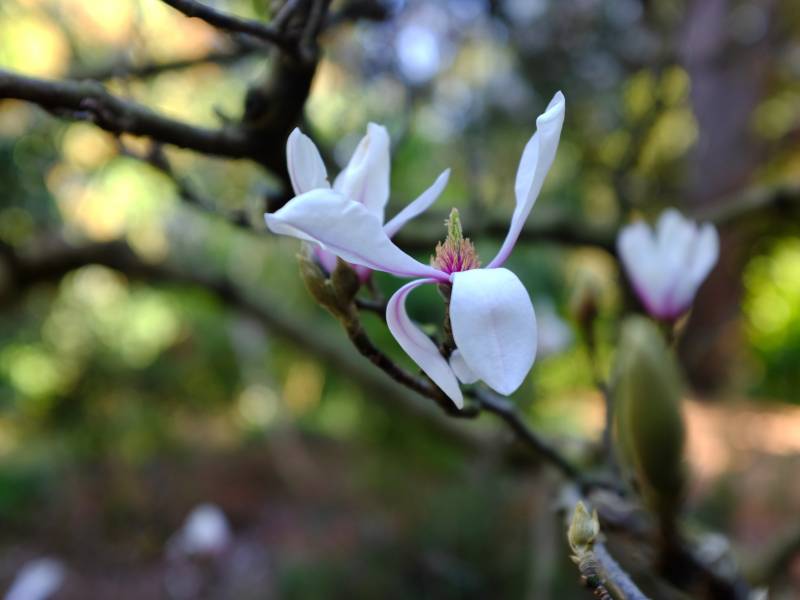 A zen magnolia blossoming at the San Francisco Botanical Garden in February 2020. Less than 20 of these trees are left in the wild. (Peter Arcuni/KQED)
A zen magnolia blossoming at the San Francisco Botanical Garden in February 2020. Less than 20 of these trees are left in the wild. (Peter Arcuni/KQED)
On our walk, Pierce points out the distinct cup-and-saucer arrangement of one magnolia’s pink-hued petals. This Magnolia campbellii, a native to Himalayan valleys, became the first of its kind to blossom in the U.S. back when the garden opened in the winter of 1940.
The rarest tree of the bunch is the Magnolia zenii, or the zen magnolia. Its flowers, snowy white with purple stripes, are smaller and more delicate than the others we passed.
“Only 18 individuals exist in the wild within one province in China, with no sign of regeneration,” Pierce said. “A lot of the garden’s magnolias are wild-collected. So they’re preserving a DNA of wild species.”
The San Francisco Botanical Garden and other created havens for flora play a critical role in protecting plants that are at risk of extinction due to climate change and deforestation.
“Botanical gardens, public gardens, are a key mechanism in making sure those plants don’t disappear from humanity,” said the San Francisco garden’s director, Matthew Stephens. “Because what the research suggests is that they probably won’t be wherever they’re growing now in 150 or 200 years.”
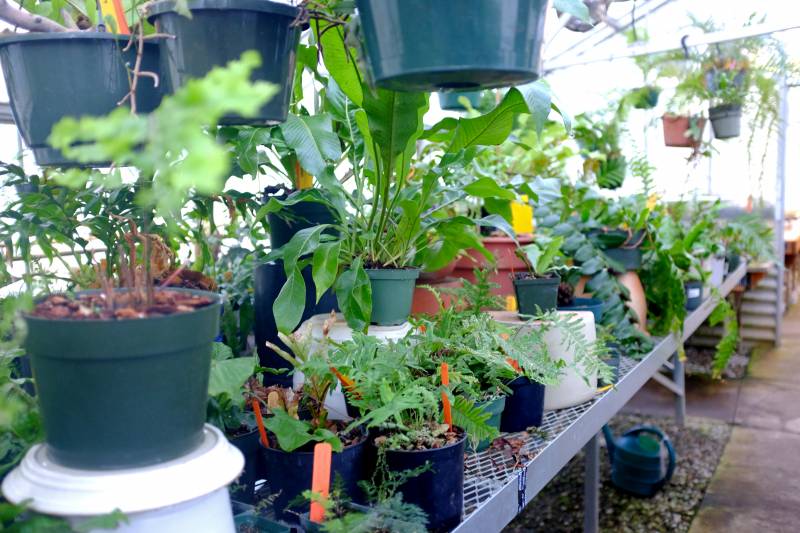 In the greenhouse, horticulturists raise plants from seeds or seedlings until they’re ready to move to the garden outside. (Peter Arcuni/KQED)
In the greenhouse, horticulturists raise plants from seeds or seedlings until they’re ready to move to the garden outside. (Peter Arcuni/KQED)
To protect threatened species, he says, the garden partners with greenhouses, nonprofits and governments from around the world. The hope is that preserving a population across a network of different gardens will act as insurance against the extinction of a species in decline.
“The core function of the nursery is to be a pipeline for plants into the garden,” Stephens said. “Through our network of collaborators, new plants arrive at the garden all the time.”
Ethically sourced seeds and seedlings are reared in the greenhouse until they’re hardy enough for planting in the garden outside. Earlier this year, garden officials announced a nearly $7 million project for a new climate-controlled greenhouse and outdoor nursery to replace the current facility, which is more than 50 years old and was originally envisioned as a temporary structure.
“With a new modern nursery,” Stephens said, “it enables us to bring a more sophisticated approach to that new wave, new pipeline of plants for today, but also for future generations.”
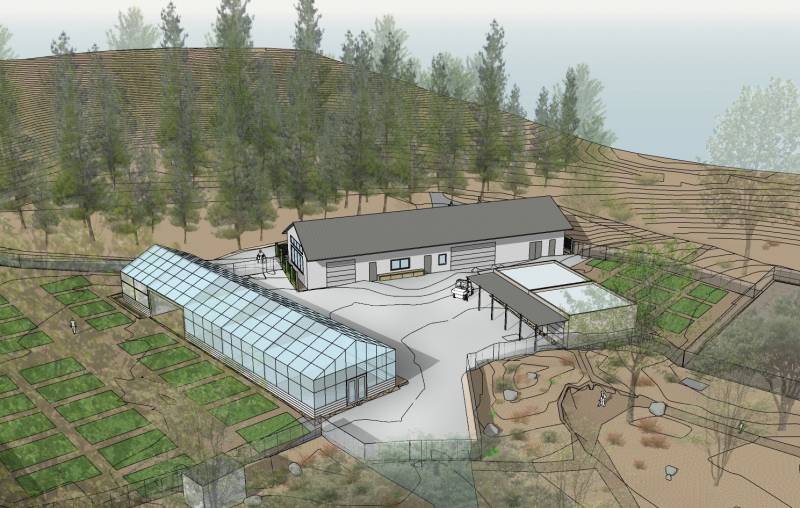 The garden has plans to break ground on a new climate-controlled greenhouse and outdoor plant nursery in 2021. (Courtesy of the SF Botanical Garden)
The garden has plans to break ground on a new climate-controlled greenhouse and outdoor plant nursery in 2021. (Courtesy of the SF Botanical Garden)
From High Altitude Cloud Forests to San Francisco Fog
The successful conservation of rare flora in gardens like this often depends on how well the environment matches the plants’ wild conditions. A species that thrives in San Francisco, for instance, may not do well in Berkeley, even though it’s just across the bay.
“We are blessed with this very cool, foggy, mild climate here in San Francisco,” said garden curator Ryan Guillou. “So we can grow a lot of things that most other gardens can’t.”
In particular, he says, these year-round conditions make the botanical garden a refuge for plants from the cool, high-elevation cloud forests of Africa and South America.
Guillou says less than 1% of the world’s land surface has the right climate to support cloud forest flora, and with climate change, even that small number will decline.
“Their habitat is definitely shrinking because these plants can’t move fast enough up the mountain to stay cool and they’re disappearing,” he said.
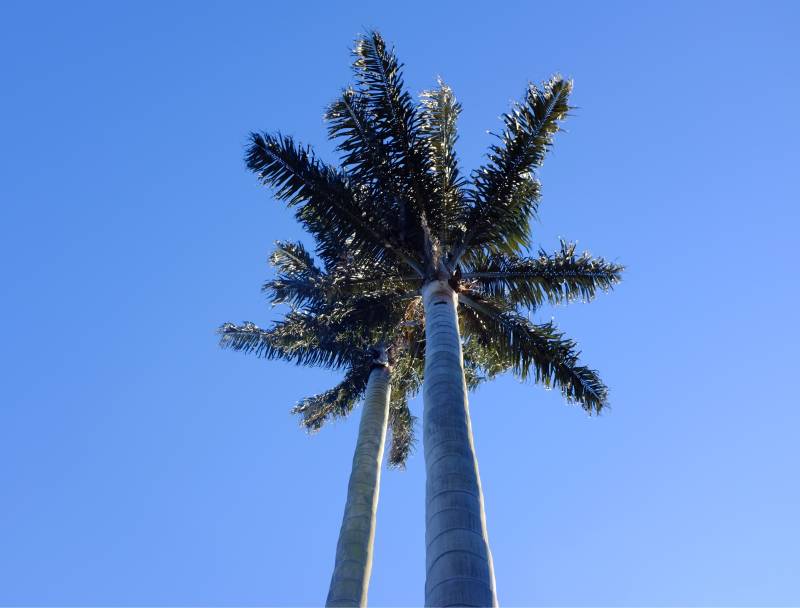 Two towering specimens of Ceroxylon quindiuense, or Andean wax palm. Plants from the mountainous cloud forests of South America are under increasing threat from climate change. (Peter Arcuni/KQED)
Two towering specimens of Ceroxylon quindiuense, or Andean wax palm. Plants from the mountainous cloud forests of South America are under increasing threat from climate change. (Peter Arcuni/KQED)
A prominent feature of the garden’s Andean Cloud Forest collection are two side-by-side specimens of Ceroxylon quindiuense, or the Andean wax palm. These towering trees grow at elevations higher than any palm species in the world. They’re also the tallest palm trees, growing up to 200 feet in the wild. The bark is chalky white with charcoal-colored rings extending up the trunk, impressions left by falling leaves as the tree grew.
During my visit, I helped Guillou plant another palm species that came to the nursery as a seedling six years ago from the highlands of Colombia. The baby Ceroxylon alpinum, or alpine wax palm, may look like an ordinary house plant now, but Guillou says over the next hundred years it will sprout up 60 feet, and its leaves will develop a glowing silvery sheen.
“These guys are actually one of the more endangered species of the Ceroxylon group,” Guillou said while covering the palm’s roots with soil. “It’s one of the classic examples of species that has to grow here. And if they go extinct in the wild, where else are they going to grow?”
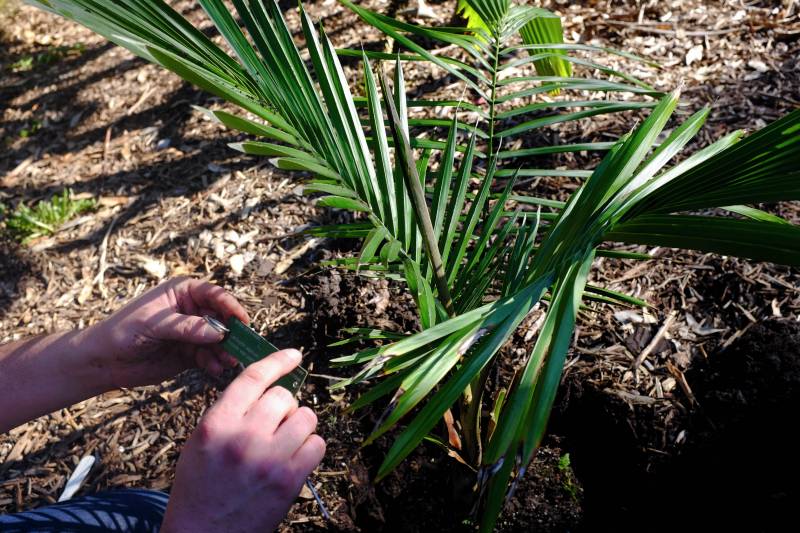 San Francisco Botanical Garden curator Ryan Guillou adds the ID tag to a newly planted endangered Alpine wax palm. (Peter Arcuni/KQED)
San Francisco Botanical Garden curator Ryan Guillou adds the ID tag to a newly planted endangered Alpine wax palm. (Peter Arcuni/KQED)
Coping With COVID-19
The three-month coronavirus shutdown cost the Botanical Garden roughly a million dollars in revenue. The garden, which is managed jointly by the San Francisco Recreation and Park Department and the San Francisco Botanical Garden Society, laid off 25 staff (12 of whom were hired back upon reopening). Dozens of programs and special events had to be canceled.
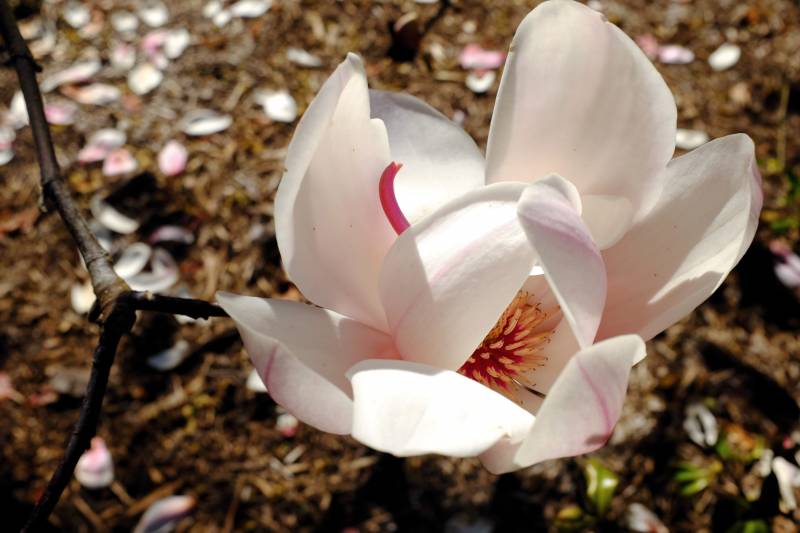 A Magnolia x veitchii flower blooms at the San Francisco Botanical Garden in February 2020. (Peter Arcuni/KQED)
A Magnolia x veitchii flower blooms at the San Francisco Botanical Garden in February 2020. (Peter Arcuni/KQED)
But despite the closure, Executive Director Stephanie Linder says plantings and other critical projects have continued, including preparations for the new greenhouse and nursery. Garden officials say plans to break ground on the project in 2021 are still on track.
With the garden now reopened to the public, Linder hopes it can be not only a refuge for plants, but for people who can connect with nature again after being trapped at home for so long.
“We’ve known for quite some time that there is scientific evidence that time spent outdoors in nature boosts immunity, lowers stress hormones, lowers blood pressure, just gives people a sense of well-being, reflection,” Linder said. “And all of those things are needed now more than ever.”
If recent attendance is any indication, Linder is right. The garden welcomed roughly 50,000 visitors in June, a 40 percent jump from last year.
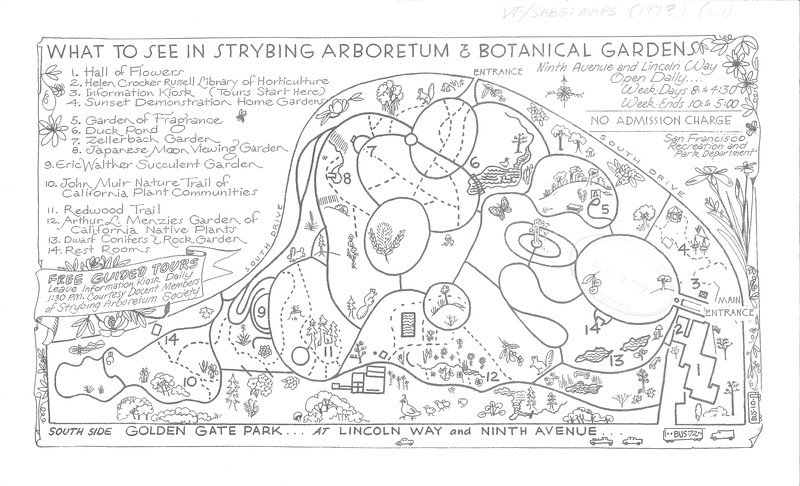 A hand-illustrated map of the garden from the 1970s. (Courtesy of the SF Botanical Garden)
20 July 2020, 1:00 pm
A hand-illustrated map of the garden from the 1970s. (Courtesy of the SF Botanical Garden)
20 July 2020, 1:00 pm - More Episodes? Get the App
Your feedback is valuable to us. Should you encounter any bugs, glitches, lack of functionality or other problems, please email us on [email protected] or join Moon.FM Telegram Group where you can talk directly to the dev team who are happy to answer any queries.
 Hidden Brain
Hidden Brain
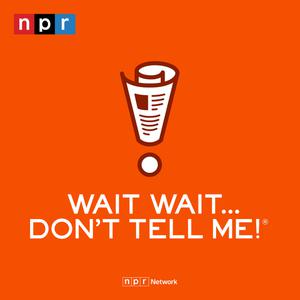 Wait Wait... Don't Tell Me!
Wait Wait... Don't Tell Me!
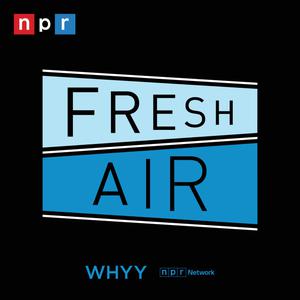 Fresh Air
Fresh Air
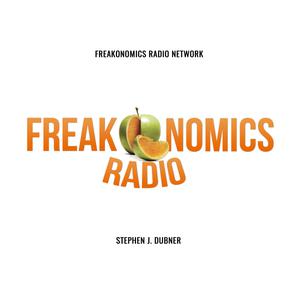 Freakonomics Radio
Freakonomics Radio
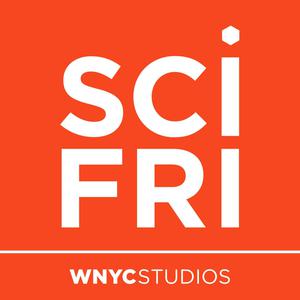 Science Friday
Science Friday
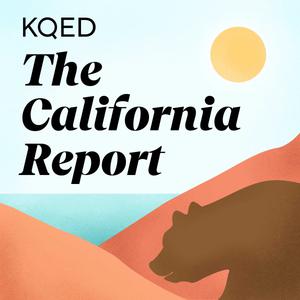 KQED's The California Report
KQED's The California Report